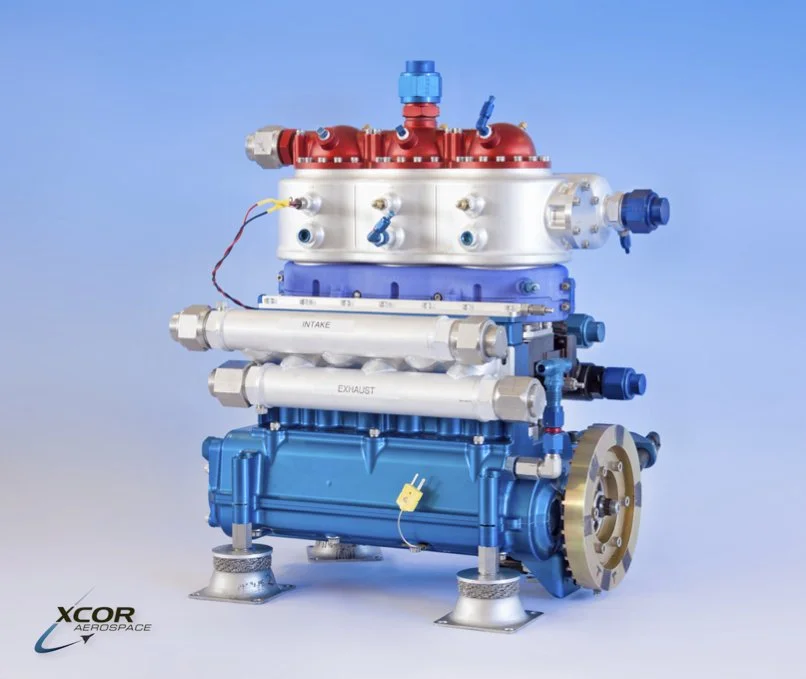XCOR Piston Pumps: The Holy Grail
Above: An XCOR rocket piston pump with colors so intense, it appears to have been born on the Fourth of July.
Welcome back!
As we discussed recently, XCOR engines are set apart from the rest by their long life, reliability and reusability.
But they are also set apart by how they are pump-fed.
XCOR’s rocket piston pump simplifies the overall propulsion design versus traditional rocket engines. It lowers the overall weight of the vehicle by enabling the use of low pressure liquid oxygen and conformal kerosene tanks, and enables the quick turnaround of the vehicle since it enables “gas and go” rocket engine operations.
Usually high-performance rocket engines use turbo pumps that include complicated design features, extreme internal operating conditions (thus needing exotic materials), have limited (bounded) range of thrust once they are designed, and typically require extremely-skilled, highly-paid staff to produce and maintain the pump inventory. The typical life-span of a high performance rocket turbo pump today is about 30 minutes (sometimes less, sometimes more) before it renders itself unusable and in need of replacement. A good rocket turbo pump for an upper stage expendable launch vehicle will cost between $500,000 and several million dollars apiece.
By comparison, XCOR’s piston pumps require no exotic manufacturing processes or materials, and the component parts can be built by readily available high-precision machine shops. The pump may be serviced on a typical shop bench in under a few hours by a technical school graduate or junior grade FAA licensed Airframe & Power Plant (A&P) mechanic. The XCOR rocket piston pumps can then be mounted on a rolling test trailer, checked-out the same day and installed on the Lynx. The all-in purchase and assembly price is an order of magnitude less than a turbo pump of similar capability.
Our rocket piston pumps will undergo regular preventive maintenance as we check on internal wear and tear, replace seals, and ensure the pumps are ready for flight. XCOR believes that rocket piston pumps in use for Lynx will last hundreds if not thousands of hours, with regular preventive maintenance. And at three minutes per flight, this adds up to a lot of rocket flights!
Each piston pump can run at a different speed to supply different amounts of propellant for various engine outputs within a fairly broad range of thrust levels. They can also provide propellants for more than one engine at the same time.
For example, recently XCOR sought to increase the thrust of an engine by 30 percent. In the turbo pump world, that probably would have precipitated a completely new design of the turbo pump, including millions of dollars of non-recurring engineering and one to two calendar years of time. In our case, we had significant margin and just turned the pump speed up to achieve the desired thrust level.
In the Lynx, each pump is so powerful it can drive propellant for two (of the four) main engines with significant margin. In other words, one pump is so powerful it provides the liquid oxygen for two engines! And a second pump provides the fuel (kerosene) for the same two engines. This makes the baseline for the Lynx propulsion system four pumps and four engines. Each engine is roughly 3000 lbf of thrust.
Given all the advantages of the rocket piston pump above, one might ask why turbo pumps are ever used in rocket propulsion systems. For smaller thrust levels below 60,000 to 100,000 lbf of thrust (depending on the fuel, liquid hydrogen or kerosene, respectfully), we ask the same question. But above these thrust levels, the turbo pump output performance per unit of weight becomes an advantage over the piston pump.
In later posts we’ll discuss more about the propulsion system, piston pumps, and at a high level, the thermodynamic cycle that makes it all work.
Tomorrow we will show you a test article for the cockpit.
